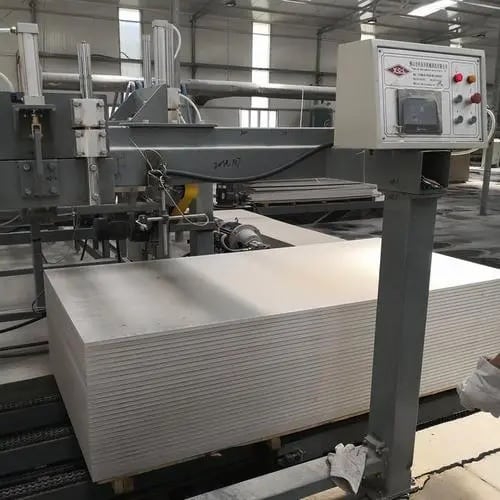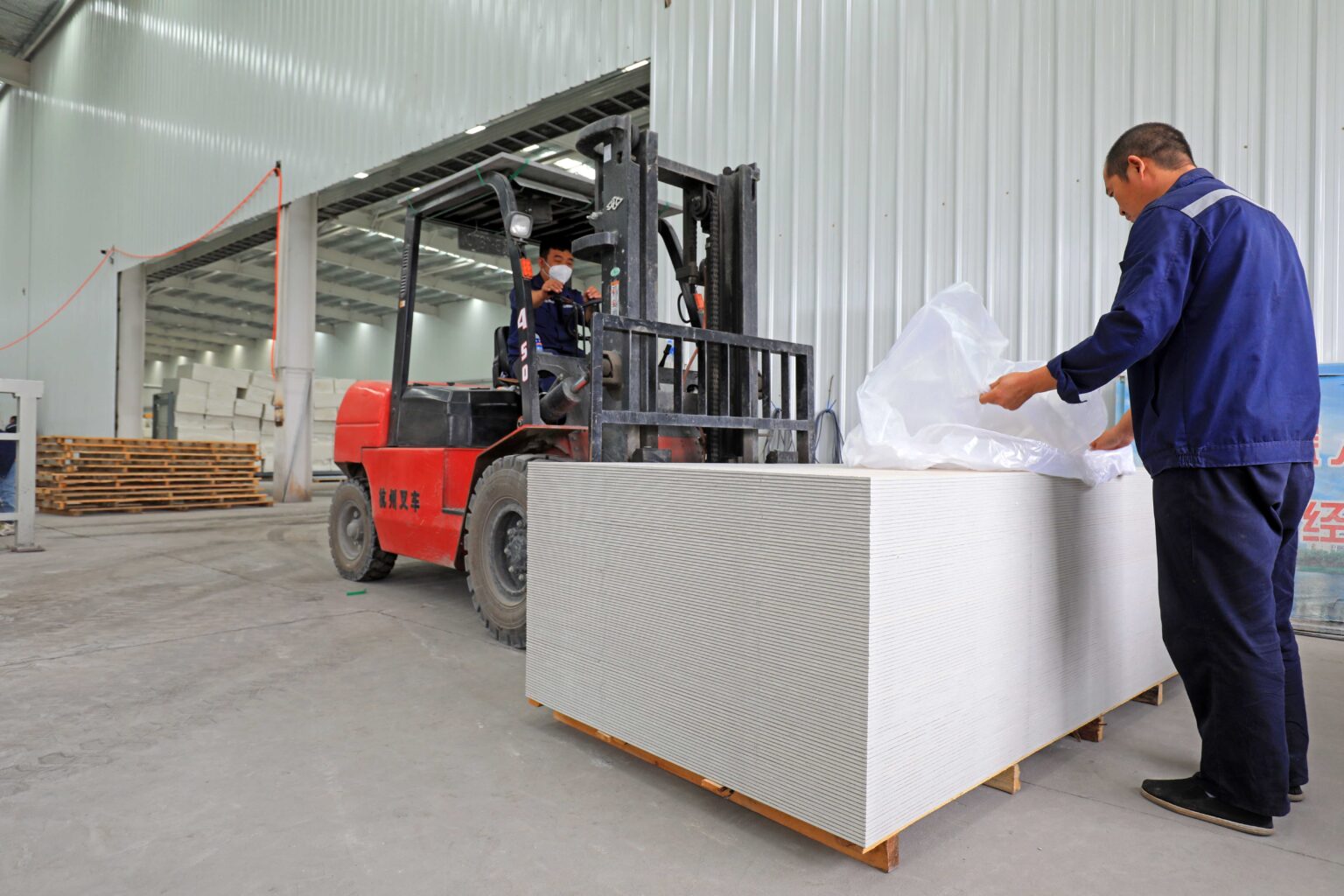Calcium silicate board is tough and does not have asbestos. It is made from silica sand, cement, and fibers. Builders and factories use calcium silicate board for walls and ceilings. They also use it for insulation. It can resist fire, moisture, and sound.
The world market for calcium silicate board is getting bigger. Asia-Pacific makes and uses the most of it. People should know its features and uses. This helps them make good choices in building and industry.

Key Takeaways
Calcium silicate board is a strong building material. It does not burn easily and does not get damaged by water. It is made from natural minerals and fibers. It does not have asbestos.
It is light and simple to put in place. This makes it good for walls and ceilings. It is also used for insulation and soundproofing. People use it in homes, offices, and factories.
The board gives great fire protection. It keeps heat in and blocks water and noise. This helps save energy and keeps people safe.
You need to be careful when putting it in. Skilled workers should do the job to stop cracks and damage. Using the right tools is important for the best results.
Calcium silicate board costs more than some other choices. But it lasts longer and does not need much fixing. This makes it a good deal over time.
Calcium Silicate Board Overview
What is the Composition of Calcium Silicate Board ?
Calcium silicate board is made from natural minerals and some waste from factories. The main parts are silica sand, quartz powder, diatomite, and fly ash. These mix with things like lime powder, cement, quicklime, and calcium hydroxide. Makers add fibers such as wood paper fiber, wollastonite, cotton fiber, and mineral fibers. These fibers make the board stronger and help stop cracks.
The process uses special chemicals to make the board work better. Calcium silicate boards do not have asbestos.
This makes them safe and not able to burn. When calcium and silica react, they form strong crystals called tobermorite.
These crystals make the board last longer and stay stable. Some boards also have gypsum and calcium aluminate. This makes the board even stronger and good for long use.
Note: Using waste like coal fly ash and carbide slag saves money and helps the environment.
What Are the Advantages of Calcium Silicate Boards?
Calcium silicate boards have many good features for building and factories.
They are lightweight, making them easy to handle and install. They are non-combustible and can resist fire for up to 4 hours, withstanding heat up to 1200℃—ideal for fireproof walls and ceilings. The boards are waterproof, preventing mold and mildew. They also provide thermal insulation to save energy and sound insulation to reduce noise. In addition, their smooth surface is easy to paint or finish.

But, these boards can break if you put too much force on them.
Property/Aspect | Calcium Silicate Board | Cement Board |
|---|---|---|
Weight | Light, good for walls and ceilings | Heavy, good for strong walls |
Fire Resistance | Very good, lasts over 2 hours | Okay, not as good for long fires |
Moisture Resistance | Good in damp places, but not in water | Very good, best for wet places |
Durability | Lasts long but can break if hit hard | Strong, works well if hit |
Good things about calcium silicate boards:
Light and simple to put up
Great at stopping fire and heat
Blocks sound well
Bad things:
Can break if pushed too hard
Costs more than cement boards
How Is Calcium Silicate Board Manufactured?
Making calcium silicate board takes a few steps:
Workers grind quartz sand, mix quicklime, and get fibers ready.
They mix the fibers with calcium and silica to make a thick liquid.
The liquid is shaped into sheets by two ways. One way lines up the fibers. The other way mixes fibers in all directions.
The sheets are steamed under high heat and pressure. This step makes tobermorite crystals. These crystals give the board strength and stop water.
Workers dry the sheets and check if they are good.
The boards are cut and sometimes get extra surface work.
Tip: Steaming can be done two ways. One way makes bigger, even crystals and more holes. This helps keep heat in but costs more.
Calcium silicate boards are usually 6 to 12 mm thick. They are lighter than fiber cement sheets. Most boards are white and do not need pressing when made. Using minerals and waste helps save energy and makes buildings lighter.
What Are the Applications of Calcium Silicate Boards?
Calcium silicate boards are primarily used in construction for their fire-resistant and thermal insulation properties. They are ideal for ceilings, partitions, and wall linings, ensuring both safety and energy efficiency in buildings.
Construction Uses
Calcium silicate boards are used in many building jobs. Builders put these panels on walls, ceilings, and floors. They work in homes and big buildings. Almost half of all calcium silicate boards are used in construction.
People want these boards because they stop fire and keep heat in. At home, people use them for wall covers, room dividers, and ceilings.
These panels do not let water in and can handle tough weather. This makes them good for bathrooms, kitchens, and basements. Offices use them for duct insulation, room dividers, and decoration.
Hotels and stores pick calcium silicate boards because they fight mold and last long. These boards are better than gypsum board for wet and fire-safe rooms.
Application Area | Benefit of Calcium Silicate Boards |
|---|---|
Walls & Ceilings | Fire resistance, soundproofing, insulation |
Flooring | Strength, moisture resistance |
Exterior Cladding | Weather durability, long life |
Partitions | Acoustic comfort, easy installation |
Industrial Uses
Factories use calcium silicate insulation in many ways. These boards protect tanks, pipes, and machines in power plants. They work well in places with high heat, like furnaces and pipes.
The boards keep heat inside and help save energy. They are strong and do not break easily, even when shaken. Big industries use them to keep equipment and workers safe.
Many places use these boards to make steel frames fireproof and cover walls near heat and chemicals.
Other Uses
Calcium silicate boards are used outside of building and factories too. People use them to block sound and stop fires in schools and hospitals. The boards do not burn or make bad smoke, so they are safe. They keep their shape even in wet places. Some projects use calcium silicate block for extra insulation. Builders use these panels for outside walls, displays, and green buildings. These many uses show why calcium silicate boards are chosen for safety and strength.
What Are the Benefits of Calcium Silicate Insulation?
Calcium silicate insulation offers fire resistance, thermal insulation, and moisture and sound resistance. It can withstand extreme heat, stop flames, and meet top fire safety standards. It reduces heat loss and saves energy in factories and buildings. It also stays dry, prevents mold, and blocks noise, making it durable, safe, and cost-effective.
Fire Resistance
Calcium silicate insulation is great at stopping fire. Builders pick it because it does not burn. It can handle very high heat. Many products have top safety ratings like A1. Some boards protect buildings for up to four hours.
They work at temperatures as high as 1100°C. This helps slow down flames and keeps people safe. The board does not make bad smoke or burning drops. Schools, hospitals, and factories use it to follow fire safety rules. It also protects steel frames and machines in factories.
Tip: Putting calcium silicate insulation in walls and ceilings makes buildings safer from fire and helps follow safety rules.
Thermal Insulation
Calcium silicate insulation keeps heat inside many places. The board does not let heat escape easily. Its thermal conductivity is low, between 0.05 and 0.10 W/m·K. In factories, it works as a strong heat barrier. It keeps its shape and strength even when very hot, above 650°C.
The material stops heat loss and saves energy. This lowers fuel costs. Workers like it because it is light and easy to cut. The board stays strong and does not shrink or crack. This makes it good for power plants, chemical factories, and refineries.
Application Area | Thermal Insulation Benefit |
|---|---|
Stops heat loss and saves energy | |
Protects shell and stops damage | |
Building Walls | Keeps rooms warm or cool |
Moisture and Sound Resistance
Calcium silicate insulation does not soak up much water. The board absorbs less than 10% water. It does not swell or bend in wet places. It stops mold and mildew because it stays dry. It does not rot or attract bugs like wood or drywall.
Builders use it in basements, pools, and other damp spots. The board blocks noise and makes rooms quieter. It can take hits without breaking. Calcium silicate insulation lasts a long time and needs little care. This saves money over the years.
Note: Calcium silicate insulation is made from natural stuff and does not have asbestos, mercury, or lead.
Limitations and Considerations
Installation Tips
Calcium silicate board has many good points, but putting it in takes planning. Workers can have problems like cracks, bending, and dust when cutting. T
he board is not simple to install. It needs special tools and workers who know what they are doing. You must handle and store the board with care to stop damage.
Workers should use dust masks, goggles, and gloves to stay safe. They also need dust control tools. Before starting, check if the frame is flat and strong.
When cutting, make shallow cuts on both sides. Sand the edges to make them smooth. Start fastening in the middle and move out to the sides. For ceilings, the base must cross the board’s fiber direction. The table below lists common problems and how to fix them:
Installation Challenge | Cause / Reason | Recommended Practice |
|---|---|---|
Cracking | Studs too far apart | Keep studs ≤400mm apart |
Warping | Moisture exposure | Store boards dry |
Loose screws | Poor fastening | Use self-tapping screws, pre-drill holes |
Unevenness | Unlevel framing | Level and secure framing |
Joint cracks | Poor joint treatment | Use mesh tape, fill joints in layers |
Tip: Always read and follow the maker’s instructions for best results.
Durability Issues
Calcium silicate board does well with heat and wet air, but it has some weak spots. The board is hard but can crack or break if you drop it or hit it.
It keeps out water better than wood or gypsum, but water for a long time can make it weak. The board stays the same shape in hot or cold places.
But it does not do well if the temperature changes fast. It is not bendy, so it does not work on curved or bumpy walls. Workers must be gentle when moving and putting in the board to stop chips or breaks.
Hard but can crack if dropped or hit
Not good for curved walls
Cost Factors
Calcium silicate board costs more than many other building boards. The price is higher because making it is hard and you need skilled workers to put it in.
It is heavier than magnesium oxide board, so shipping and moving it costs more. The first price is 30-50% more than gypsum board. But it lasts over 30 years and does not need much fixing. Gypsum board lasts only 8-10 years and may need repairs.
Over time, you save money on fixing and upkeep, especially in wet or fire-risk places. Many builders use calcium silicate board in bathrooms, kitchens, and busy places where strength and safety are important.
Attribute | Magnesium Oxide Board | Calcium Silicate Board |
|---|---|---|
Lower | Higher | |
Weight | Lighter | Heavier |
Service Life | Shorter | 30+ years |
Maintenance | More needed | Less needed |
Note: Calcium silicate board is not the best pick for jobs with small budgets or for do-it-yourself projects.
Calcium silicate boards are good at stopping fire, keeping heat in, and blocking water. Builders put them on walls, ceilings, and room dividers in houses, offices, and factories. The table below shows their main points:
Aspect | Details |
|---|---|
Uses | Walls, ceilings, insulation, partitions |
Benefits | Fireproof, sound-absorbing, moisture-resistant |
Value | Meets safety codes, supports energy efficiency |
People planning a project should pick the right board for each job. They need to think about price, safety, and how long it will last before picking calcium silicate boards.
FAQ
What makes calcium silicate board different from gypsum board?
Calcium silicate board can handle fire and water better than gypsum board. It works well in places that are wet or hot. Builders pick it because it is strong and safe.
Can people use calcium silicate board outside?
Yes, people use calcium silicate board on outside walls and cladding. The board does not get ruined by rain, wind, or sun. It will not rot or let mold grow.
Is calcium silicate board safe for homes?
Calcium silicate board does not have asbestos or bad chemicals. It follows fire and health safety rules. Families can use it in kitchens, bathrooms, and bedrooms.
How does calcium silicate board help with soundproofing?
The board keeps noise from going between rooms. Schools and offices use it to make rooms quieter. Its thick structure soaks up sound and stops echoes.
Tip: Always look at the product label for safety and performance ratings before you buy calcium silicate board.
